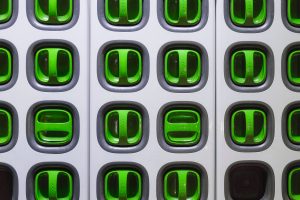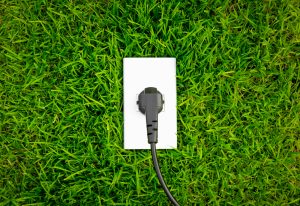The power sector has been historically categorised by a mature technology and a stable legal and regulatory framework that guaranteed a steady revenue stream for utilities. But now, both generation and consumption patterns are changing as more renewable energy is added to the global energy mix, charging of electric vehicles begin to create new demand patterns and consumers start to become prosumers by installing solar panels and battery storage systems in their homes. Utilities are thus striving to keep up with the rapidly evolving sector by altering their business models, going digital and focusing more on providing a better customer experience. Having said this, there are still a number of challenges that need to be addressed in order to ensure a smooth energy transition.
Renewable push is creating energy security dilemmas
Almost half of all new generation capacity till 2040 is expected to be provided through renewable energy and in some predictions, even higher levels of renewable energy are predicted to be added to the energy mix in the coming decades. Issues such as the market design for storage solutions, the interface between electric vehicles and the grid and increased risk of data theft all have the potential to expose consumers to new risks. Regulators and policy makers have to move quickly and to keep pace with the evolving grid and the rising need for flexible operation of global power systems.
Energy efficiency improvements so far have been inadequate
As the climate crisis deepens, there will be a rising need for heating, cooling, lighting, mobility and other critical energy services. Currently improvement of energy intensity levels for the global economy are slowing (the 1.2% average in 2018 was half the rate seen in 2010). Improving energy efficiency is considered to be the single most important factor in keeping to global climate commitments and keeping global warming below 1.5°C. Energy efficiency efforts have the potential to reduce global energy intensity by 3% every year. This means that less generation capacity needs to be added every year which in turn implies less carbon emissions. The need of the hour are tools that will shift electricity demand to cheaper and less emission-heavy hours of the day, reducing electricity bills for consumers and helping in system balancing while reducing emissions. Even industries like cement, aluminium, plastics and steel could see growth in emissions halted completely just via more efficient design, use and recycling. There needs to be a huge push towards energy efficiency in the form of more stringent regulations that across various sectors that will force industries and utilities to put greater emphasis on consume energy in a more sustainable manner.
Current regulatory landscape is not enabling effective grid transformation
In most countries, especially in ones with an energy deficit, current policies are not catered towards enabling a deeper and systematic energy sector transformation in line with global targets. In mini-grids, for example, only 3 out of the ten highest energy deficit countries have developed comprehensive frameworks for mini-grids. Countries, especially ones that are still moving towards complete electrification need to put in place policies that will smoothen the energy transition in line with global patterns. It is increasingly becoming clear that the existing regulatory framework is inadequate to deal with the demands placed on the evolving power grid. It is essential for regulators and policy makers to revisit these policies so that they reflect the demands of today and the requirements of the future.
Climate change is putting infrastructure at risk and threatening lives in the process
Extreme weather events due to the deepening climate crisis are causing billions of dollars’ worth of damage to grid infrastructure all over the world. This is not only causing huge losses for utilities and forcing them to pass the costs of repair and replacement to customers, it is also causing massive disruption to our daily lives and is hindering the ability of critical loads to function during natural disasters. Utilities have to accelerate efforts towards making the grid more resilient and reliable by measures like strengthening network and distribution systems and installing micro-grids that are capable of operating as “islands” when the main network is down or provide the grid with power during peak demand periods.
Reduced dependency on the grid is leading to redundancy of infrastructure
Rising electricity tariffs and reducing the cost of solar and battery storage technologies in many countries are forcing people to go off the grid and disconnect from their utility. This is raising electricity tariffs even further for the remaining customers who are consequently choosing to go off the grid in order to reduce electricity costs. This “death spiral” could have a catastrophic effect on utilities and could render large clusters of grid infrastructure redundant. It is critical for utilities to ensure maximum value from their investments which would keep electricity tariffs in check while improving the quality of service for consumers. It is also essential that utilities remain proactive in catering to evolving consumer demands and alter services that will ensure customer loyalty and prevent them from disconnecting from the grid.


